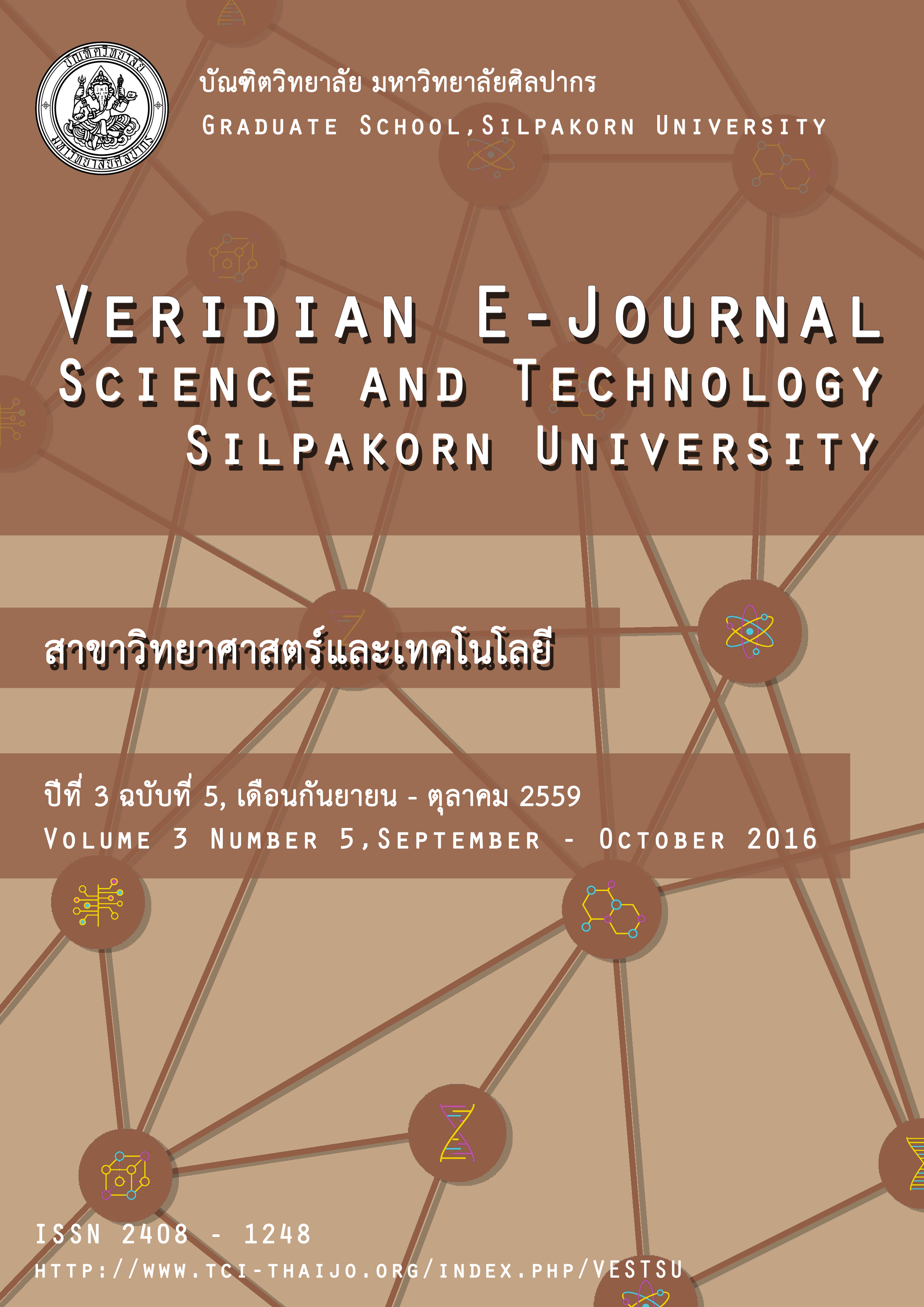การศึกษาอิทธิพลของวิถียิงและระยะยิงของกระสุนปืนที่มีต่อร่องรอยแตกร้าว บนกระจกรถยนต์
Main Article Content
Abstract
อาชญากรรมที่เกิดขึ้นบ่อยโดยใช้อาวุธปืนเป็นอาวุธหลัก มักจะเป็นคดีที่ใช้อาวุธปืนพกยิงเข้าสู่รถยนต์ โดยร่องรอยกระสุนปืนที่เกิดขึ้นบนกระจกรถยนต์เป็นวัตถุพยานที่เหลืออยู่ในที่เกิดเหตุ ซึ่งสามารถนำมาวิเคราะห์เพื่อหารายละเอียดเพิ่มเติมในการก่อเหตุในคดีได้ งานวิจัยนี้ได้ศึกษาอิทธิพลของวิถียิงที่มีผลต่อรอยแตกร้าวที่เกิดขึ้นบนกระจกรถยนต์รอบคัน ทั้งกระจกด้านหน้า ด้านหลัง และด้านข้าง นอกจากนี้ยังมีการศึกษาเปรียบเทียบร่องรอยแตกร้าวของกระจกที่เกิดจากระยะยิงที่แตกต่างกัน โดยเลือกใช้ปืนที่คนร้ายมักใช้ก่อคดี ได้แก่ อาวุธปืนพกอัตโนมัติ ขนาด 9 มม. และใช้กระสุนปืนแบบทองแดงหุ้มตะกั่ว โดยกำหนดระยะยิง 1 เมตร และยิงในแนวระดับ วิถียิงแบ่งเป็น 3 มุม คือ มุมยิงที่ 30o 45o และ 90o เทียบกับผิวกระจก สำหรับการเปรียบเทียบระยะยิง กำหนดระยะยิง 3 เมตร ที่มุมยิง 30o 45o และ 90o เช่นเดียวกัน โดยยิงเข้ากระจกด้านหลัง ดังนั้นงานวิจัยนี้จึงได้ผลการศึกษาเป็นชุดข้อมูลภาพและข้อมูลเชิงตัวเลขที่แสดงความสัมพันธ์ระหว่างร่องรอยแตกของกระจกและวิถียิงหรือระยะยิง ซึ่งงานวิจัยนี้แสดงให้เห็นว่าปัจจัยสำคัญที่ส่งผลต่อจำนวนเส้นแตกร้าวรอบรูกระสุน ได้แก่ วิถียิง ระยะยิง และกระจกรถยนต์ที่แตกต่างกัน
One of the crimes that occur frequently is shooting into the car windows or windshield by using a pistol. The evidence that always left behind at the crime scene was the trace of ammunition occurred on the car glass. Glass fracture analysis was used for getting relevant crime scene information. This research aims to study the influence of different trajectories on glass fracture of the car glasses, including laminated front windshield, tempered back glass (rear window), and side window. Moreover, the effect of different shooting distances on rear window was investigated. A 9 mm automatic pistol is one of firearm used most frequently in crime. Therefore, 9 mm automatic handgun with full metal jacket (FMJ) bullets was used in this work. The shooting range was 1 meter and a bullet was fired horizontally. Three different trajectories were the angle of incident at 30o, 45o, and 90o to the glass surface. Shooting range at 3 meters with incident angle at 30o, 45o, and 90o on the tempered back glass was studied. This research has reported a series of images and numerical data that reveal the correlation between the glass fracture and the trajectory of the shot and the comparison between fracture patterns from the shooting distance at 1 and 3 meters. In addition, the different trajectories, various shooting distances, and car glasses play an important role on the number of radial and concentric fracture lines around the bullet hole.

